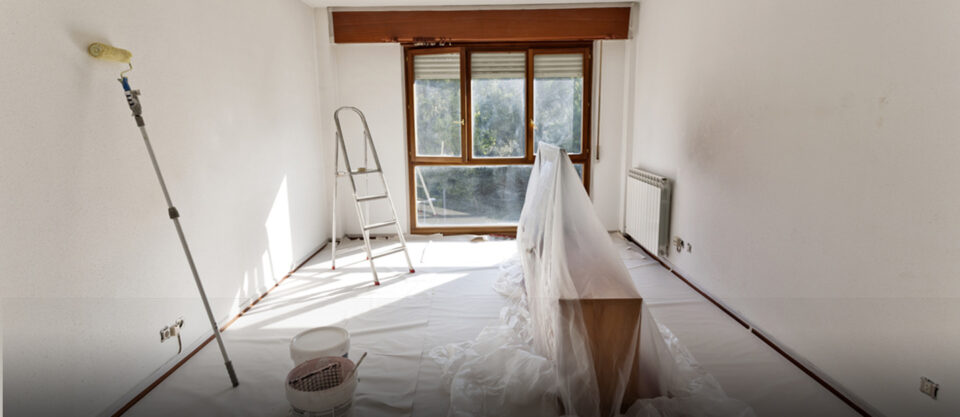Painting your home is a great way to give it an updated and refreshed look. However, there are some important steps you should take before you start painting in order to ensure a successful project. In this article, we will provide you with some helpful tips for properly preparing your home for painting. We will guide you through the process of selecting the right paint, materials and tools, as well as provide some advice on how to make sure your walls are ready for painting.
Table of Contents
Remove Wall Hangings
Removing wall hangings is one of the most important steps for prepping your home for painting. No matter what type of wall decorations you have, it is essential to remove them before starting any kind of painting project. This could include framed artwork, photographs, mirrors, shelf brackets and other items hanging on the walls. Removing these objects will help ensure a professional-looking finish and prevent any permanent damage to the decorations themselves.
Patch and Sand Walls
Patch and Sand Walls are key steps in prepping a home for painting, and can save homeowners time, money and energy in the long run. When drywall repairs patching holes and cracks that exist in walls prior to applying paint, it is important to ensure that a quality bonding agent is used in order to create a strong seal that will last throughout the life of the paint job.
After patching the walls properly, they should be sanded down with sandpaper or an electric sander to create a smooth surface on which new paint can be applied. Sanding also helps remove any dust particles from the wall before painting begins. It’s important not to skimp on this step as it directly affects how evenly the new coat of paint will stick.
Cover Floors and Furniture
When planning to paint your home, it’s important to consider how best to protect your floors and furniture from the paint. Taking the time to cover up and shield these items before you start painting will save you time, money, and headache in the long run. Here are some tips for covering up your floors and furniture when preparing for a home painting project:
First, prepare any areas that need the painting by removing all furniture and décor. This will make it easier to reach every corner of the room without having to worry about paint spilling or staining something that shouldn’t be painted. Next, use plastic sheeting or drop cloths over any remaining furniture or flooring that cannot be removed. Be sure these sheets are taped securely so they don’t move during the painting process.
Protect Doors, Windows, Trim
When prepping your home for painting, it is important to remember to prepare not just the walls and ceiling, but also all of the doors, windows, trim and other architectural features. You can contact Drywall contractors to get more details.
Every inch of space needs to be covered with plastic sheeting or drop cloths in order to protect them from any dust, debris, or drips that may occur during painting. You will also want to make sure that hinges and other hardware have been removed so they don’t get painted over by accident. Take special care when taping off windowsills as well; use high-quality painter’s tape in order to ensure the paint won’t bleed onto them when you start rolling on the new color.
Clean Up
Start by clearing away all furniture, decorations, carpets and other items that may be in the paint’s way. Doing this will minimize disruptions and free up much of the space, making it easier for painters to access difficult-to-reach places like high walls or ceilings. Additionally, it’s important to remove any dirt or dust from surfaces prior to painting; this will make sure that the primer and new paint layer can bond properly with the surface. To do this, use a mild detergent on wood surfaces; for plastic or metal items use a solvent like alcohol or acetone instead.
Conclusion
In conclusion, you are now ready to paint your home. You have taken the necessary steps to ensure that the job is done correctly and will look great when complete. Taking the time to prepare your home for painting is essential for a successful project. With proper preparation, you can avoid common mistakes such as improper surface cleaning or inadequate time spent on patching cracks and holes in walls.
You should also make sure that you are properly protected while painting; this includes wearing protective clothing, gloves, goggles, and a face mask. Doing so will help prevent irritation of the skin and eyes due to fumes from paints and other chemicals used in prepping the space for painting. Furthermore, using quality tools such as rollers with thick nap covers will make it easier to get a uniform coat of paint each time you apply it.

